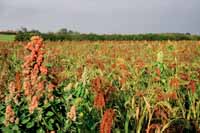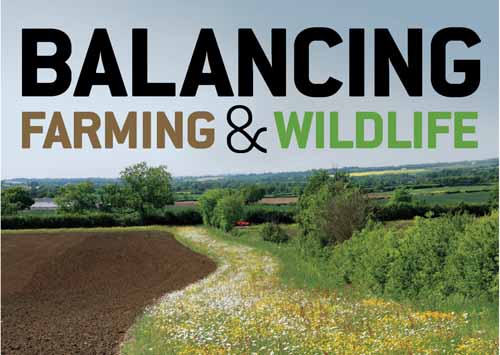Farmland birds need extra feeding

The early winter has meant many farmland birds have already consumed seed provided by bird food crops and face starvation unless they receive supplementary feeding.
It also highlights that growers need to consider ways of increasing seed supply when planning bird food crops within stewardship schemes, says Marek Nowakowski of Wildlife Farming.
The early, harsh winter has meant birds ate seed in December that they would normally eat in February. “Birds like goldfinches can lose one-third of their body weight in a single night of sub-zero temperatures, emphasising the importance of supplementary feeding.”
Supplementary feeding is a well-known technique for game-bird feeding. But having dense flocks in a small space can lead to disease problems, so consider feeding on number of alternating sites.
If spreading by hand, avoid feeding too much to minimise the risk of attracting rats. Ideally, birds should clear it up by the afternoon so there is none left for rats to feed on at night, says Mr Nowakowski.
Ideally, broadcast onto areas of hard standing, tracks and rides and not on stubbles, as there is the risk of introducing weeds and pests to following crops. “It can act as a green bridge, and birds find food more easily on these other areas.”
One cheap and effective system is to take an old 40-gallon plastic barrel cut in half and place it on a simple wooden stand. Then just add a galvanised feeder-hopper underneath, which can be easily purchased from agricultural stores – all costing less than £10.
Mr Nowakowski says the mix should provide a variety of seeds and sizes, so birds of all sizes can have something. Big grains such as wheat, barley and oats are ideal for sparrows and corn buntings, while linseed and oilseed rape are ideal for smaller birds. “Aim for about 70-80% cereal, with oilseeds making up the remainder.”
Looking ahead, the shortage means there will be a greater emphasis on increasing yields from bird food crops. This can be achieved by simply increasing the area grown, identifying unproductive margins or inaccessible field corners.
But the more attractive option is to increase bird food crop yields. “View it as you would other crops. This includes testing soil and correcting any deficiencies and pH problems, considering nitrogen inputs and treating pests if present, such as flea beetle.”
Blackgrass problem
Autumn-sown bird food crops could prove an attractive alternative to those planted in spring, but blackgrass control remains a stumbling block.
Heavy land is more difficult to cultivate in March, so drilling in September could be an attractive alternative, says Mr Nowakowski.
“In the second year of trials, the mixes look really promising and have survived winter in good shape. But the key problem is blackgrass. While there are products, they are not approved for use on these crops”.
“This is one area where red tape is preventing more growers from growing these crops,” says Mr Nowakowski.

This new series aims to provide timely tips and advice over the coming year, helping growers make the most of environmental stewardship and the Campaign for the Farmed Environment.
It will cover establishing and managing wildlife crops, including field margins, bird food crops and grass/flower mixtures.
Coming up over the next year:
* Tips on sowing bird food crops
* Managing autumn-established grass/flower margins
* Nitrogen applications, herbicide use and pest control
* What flower mixtures and where to grow them
* Autumn cover cropping options
* Plus new research results


